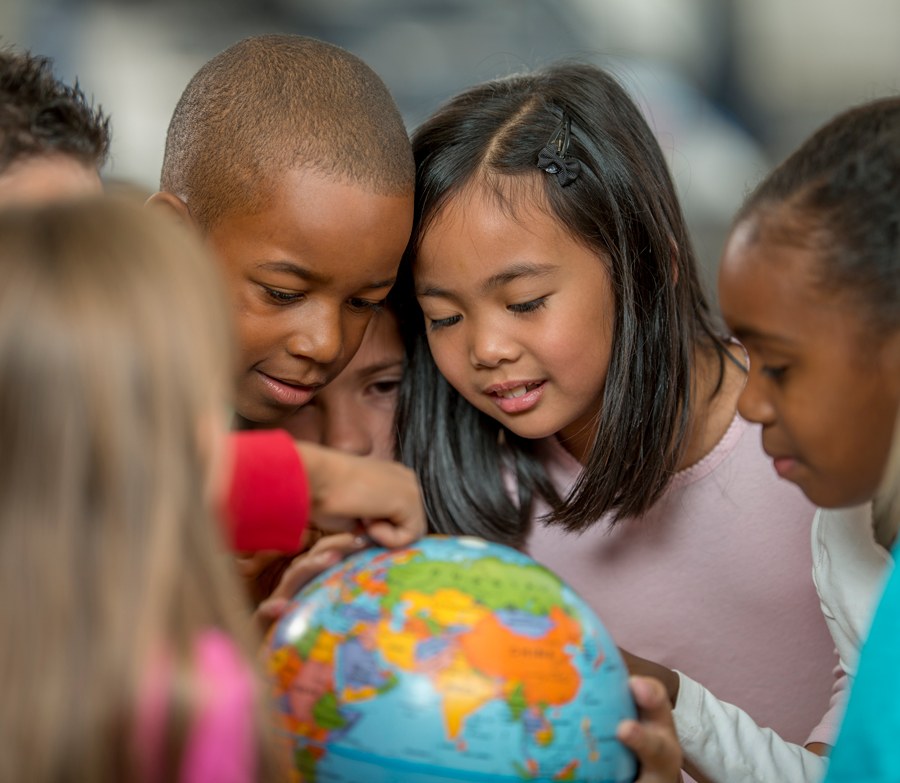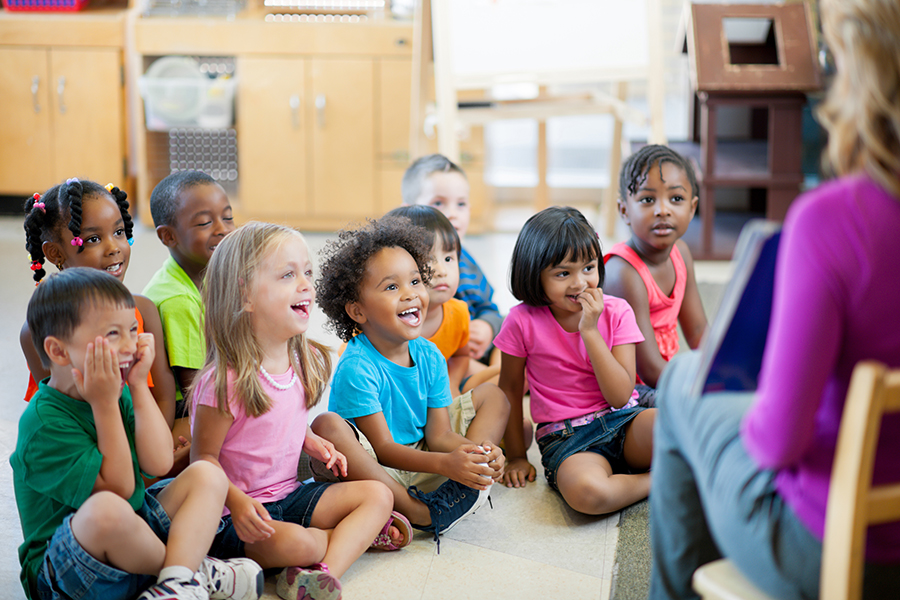Posted: December 7, 2016
In the United States, the number of children under the age of 17 living in non-English language households increased from 28% to 32% between 2004 and 2013 (Child Trends 2014). In two-thirds of these homes, Spanish is the language spoken—about 16 million children. Other dual language learners come from homes that speak Indo-European languages like French, German, Russian, Hindi, Asian, or Pacific Island languages. Children who learn more than one language are a diverse group. Dual language learners may be recent immigrants or have parents who are recent immigrants. As infants and toddlers, dual language learners may learn more than one language simultaneously. As older children, dual language learners may learn English after acquiring proficiency in their native language.

Early care and education professionals are in a prime position to support the development of dual language learners. The early childhood environment may be a dual language learner's first unknown social environment as well as their first time in a different cultural environment. When teachers provide dual language learners with positive environments that support children's language development, relationships with adults and peers, and connections to home, they support children in making the most of their "bilingual advantage" and help prepare them to make the most of later learning opportunities.
Create a welcoming and positive environment
A welcoming and positive environment in the classroom is key to fostering the development of dual language learners.
When children experience a welcoming and positive environment, they are more likely to develop confidence and positive self-esteem; effectively communicate their feelings; concentrate and learn; and succeed in group situations. Welcoming and positive environments send a message to children and their families that they are valued and respected.
An important first step toward creation of an environment that supports learning and development is to get to know children's families and backgrounds and build partnerships with families. Effective home-school partnerships help early care and education (ECE) professionals learn about children's families, involve families in children's learning, and create welcoming environments. To learn about children and families, ECE professionals need to gather information about children's early learning experiences and abilities. Each family's interests and home language, and children's abilities and needs, acquaint professionals with the unique characteristics and needs of their children.
The early childhood environment is an excellent setting for supporting the development of children's listening and speaking skills. Reading aloud to children helps to promote their language and literacy development. Offer a variety of books from different cultures and languages to create a welcoming and positive learning environment. Display environmental print, materials, and resources labeled in both English and the native language to provide visual cues to support learners (Espinosa and Magruder 2015). Incorporate materials that reflect children's cultural backgrounds to promote an appreciation for and understanding of diversity.

Promote positive relationships
Positive relationships with children serve as an important foundation for ECE professionals to promote the development of dual language learners.
Professionals can enhance their relationships with children when they are involved in learning with children, are consistent and firm, support children's positive behaviors, use classroom organization, and keep predictable classroom routines (Howes and Ritchie 2002). Positive adult-child relationships are especially important when monolingual English-speaking ECE professionals work with children who are dual language learners.
Dual language learners may feel withdrawn, insecure, and under stress (Saarni 1990). As dual language learners begin to learn their second language, they may have difficulty communicating, following directions, expressing ideas and feelings, and responding to questions consistently (Santos and Ostrosky 2002). They may go through a nonverbal period where they begin to gather information about how to communicate with their peers and adults in their second language. During this period, children often choose not to speak and may isolate themselves and take on the role of observer.
Teachers and children can communicate with each other using verbal and nonverbal approaches. Gestures, facial expressions, and other body movements like head nodding can be helpful for communicating in nonverbal ways. Use of phrases--greetings, invitations, directives, and compliments--in a learner's home language can help a teacher communicate with a dual language learner in a positive manner and avoid use of the home language only for discipline (Castro and Gillanders 2010).
Promote positive behaviors in children, support positive peer relationships, and create opportunities for children to play together to help integrate dual language learners into the classroom environment and community.
"I think the goal for early education in general is to try to promote language development, expose children to language, and make them talk as much as possible. When you are working with children who are dual language learners, the same principle applies, but in this case, what we need is to support them to talk and be exposed to language as much as possible in two languages, not just English." - Dr. Dina Castro
Build home-school partnerships
Effective home-school partnerships enhance the learning and language development of dual language learners.
Part of creating effective home-school partnerships involves finding effective ways to communicate with families of dual language learners (Breiseth, Robertson, and LaFond 2011). Staff members who speak the home language of dual language learners can help facilitate daily communication and develop a reliable process for translating documents and communicating by phone. ECE professionals can also look for ways to involve parents in the school community. Involvement may include classroom volunteering or sharing activities that draw upon parents' skills and hobbies. Family feedback on ways that they would like to be involved can help identify opportunities for family involvement.
To learn more about how to support dual language learners within your program, use Better Kid Care's module "Dual Language Learners: Strategies for Successful Opportunities in ECE"
Resources
Frank Porter Graham Child Development Institute:
Head Start:
NAEYC:
- "Responding to Linguistic and Cultural Diversity"
- "Welcoming Dual Language Learners"
- "What Parents Have to Teach Us About Their Dual Language Children"
References
-
Breiseth, L., K. Robertson, and S. Lafond. 2011. "A Guide for Engaging ELL Families: Twenty Strategies for School Leaders." Colorín Colorado. Retrieved from http://www.colorincolorado.org/sites/default/files/Engaging_ELL_Families_FINAL.pdf.
-
Castro, D.C., E.E. García, and A.M. Markos. 2013. "Dual Language Learners: Research Informing Policy." Chapel Hill: The University of North Carolina, Frank Porter Graham Child Development Institute, Center for Early Care and Education--Dual Language Learners.
-
Child Trends. 2014. "Dual Language Learners." Child Trends Data Bank. Retrieved from http://www.childtrends.org/?indicators=dual-language-learners.
-
Espinosa, L.M., and E.S. Magruder. 2015. "Practical and Proven Strategies for Teaching Young Dual Language Learners." In Getting it Right for Young Children from Diverse Backgrounds: Applying Research to Improve Practice with a Focus on Dual Language Learners, 2nd ed., edited by L.M. Espinosa, 76-113. Upper Saddle River, NJ: Pearson.
-
Santos, R. M., and M.M. Ostrosky. 2002. Understanding the Impact of Language Differences on Classroom Behavior. What Works Briefs, Rep. No. 2. Champaign, IL: Center on the Social and Emotional Foundations for Early Learning.

